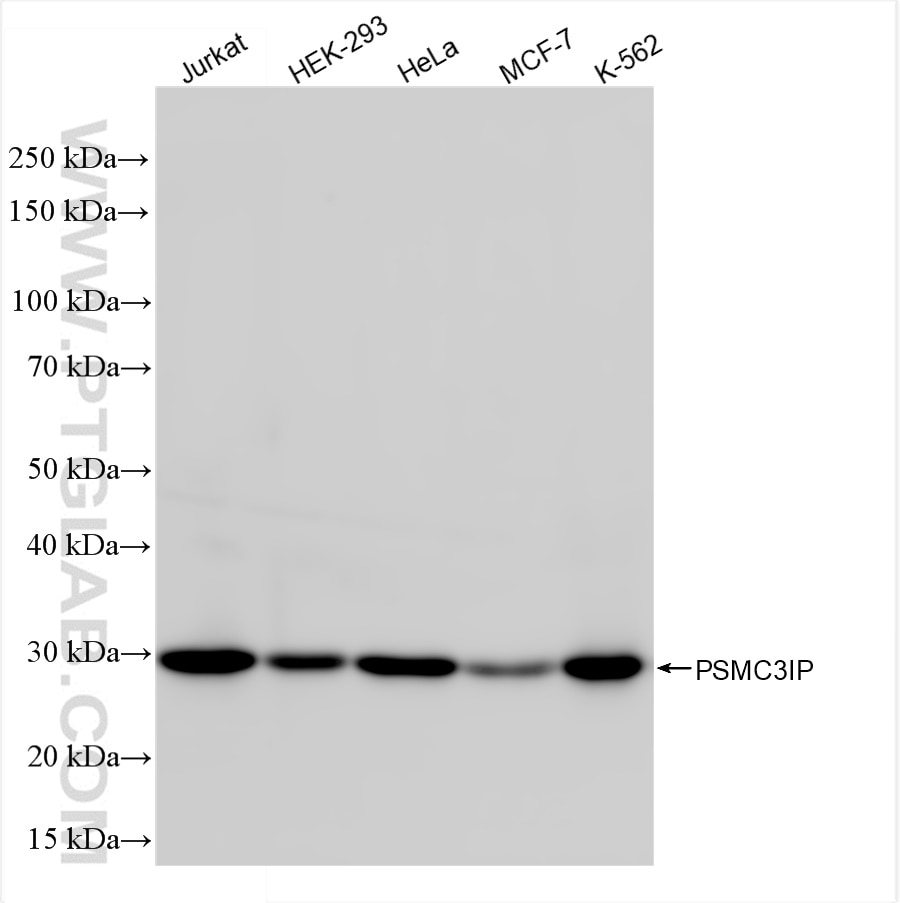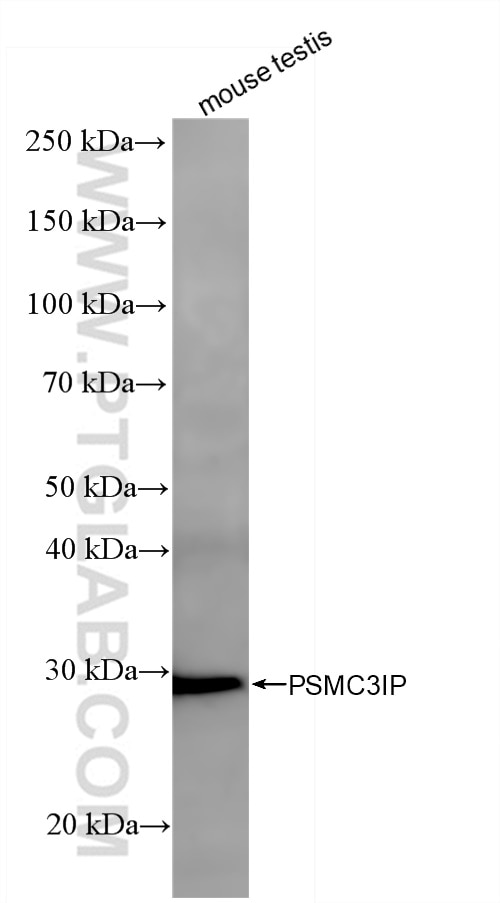PSMC3IP Recombinant antibody
PSMC3IP Recombinant Antibody for WB, ELISA
Host / Isotype
Rabbit / IgG
Reactivity
human, mouse
Applications
WB, ELISA
Conjugate
Unconjugated
CloneNo.
242517C12
Cat no : 84934-1-RR
Synonyms
Validation Data Gallery
Tested Applications
| Positive WB detected in | Jurkat cells, mouse testis tissue, HEK-293 cells, HeLa cells, MCF-7 cells, K-562 cells |
Recommended dilution
| Application | Dilution |
|---|---|
| Western Blot (WB) | WB : 1:1000-1:6000 |
| It is recommended that this reagent should be titrated in each testing system to obtain optimal results. | |
| Sample-dependent, Check data in validation data gallery. | |
Product Information
84934-1-RR targets PSMC3IP in WB, ELISA applications and shows reactivity with human, mouse samples.
| Tested Reactivity | human, mouse |
| Host / Isotype | Rabbit / IgG |
| Class | Recombinant |
| Type | Antibody |
| Immunogen | PSMC3IP fusion protein Ag1883 相同性解析による交差性が予測される生物種 |
| Full Name | PSMC3 interacting protein |
| Calculated molecular weight | 25 kDa |
| Observed molecular weight | 24-29 kDa |
| GenBank accession number | BC008792 |
| Gene symbol | PSMC3IP |
| Gene ID (NCBI) | 29893 |
| Conjugate | Unconjugated |
| Form | Liquid |
| Purification Method | Protein A purification |
| Storage Buffer | PBS with 0.02% sodium azide and 50% glycerol pH 7.3. |
| Storage Conditions | Store at -20°C. Stable for one year after shipment. Aliquoting is unnecessary for -20oC storage. |
Background Information
PSMC3IP, also called HOP2, encodes a protein that functions in meiotic recombination. It is a subunit of the PSMC3IP/MND1 complex, which interacts with PSMC3/TBP1 to stimulate DMC1- and RAD51-mediated strand exchange during meiosis. The protein encoded by this gene can also co-activate ligand-driven transcription mediated by estrogen, androgen, glucocorticoid, progesterone, and thyroid nuclear receptors. Mutations in this gene cause XX female gonadal dysgenesis.
Protocols
| Product Specific Protocols | |
|---|---|
| WB protocol for PSMC3IP antibody 84934-1-RR | Download protocol |
| Standard Protocols | |
|---|---|
| Click here to view our Standard Protocols |



